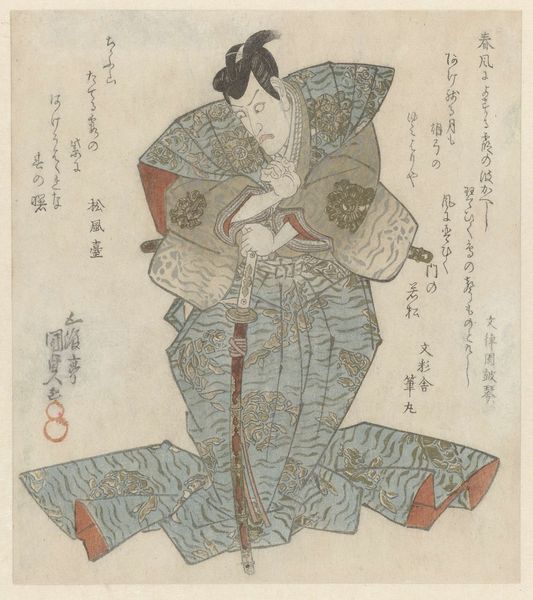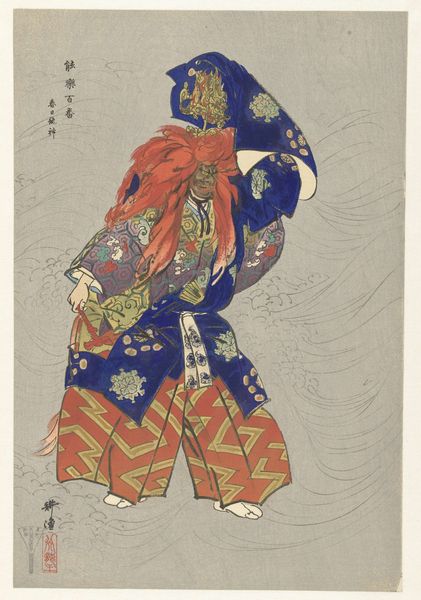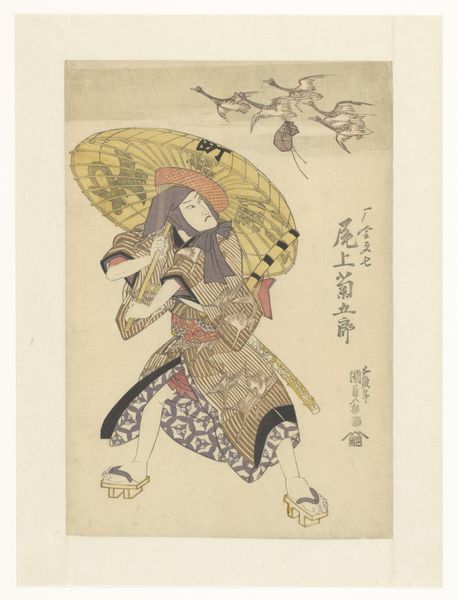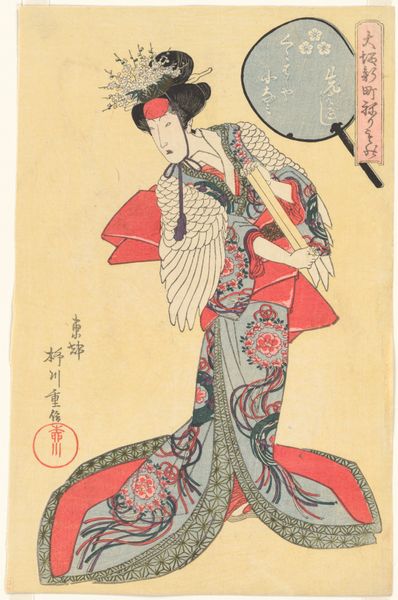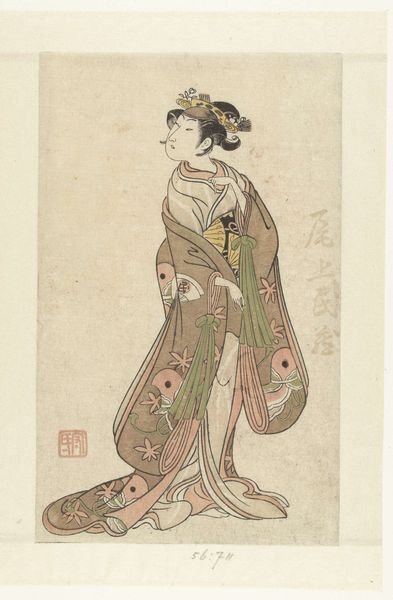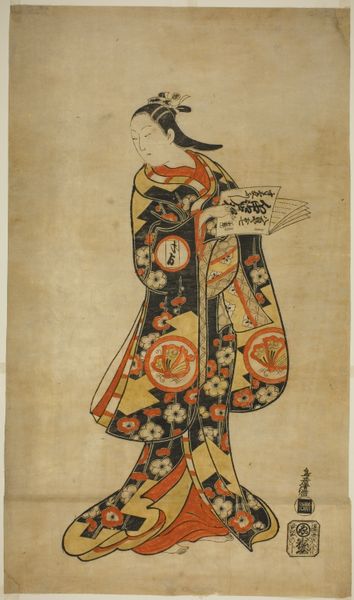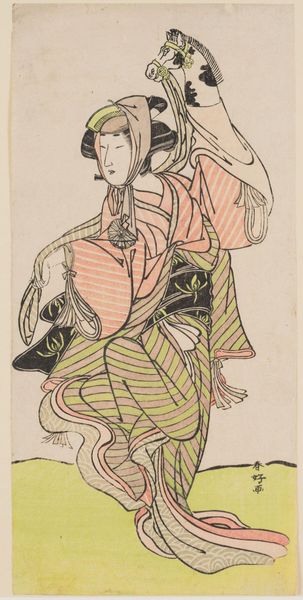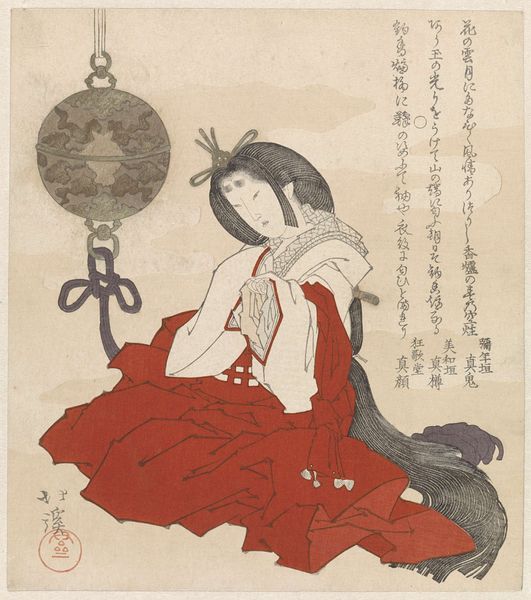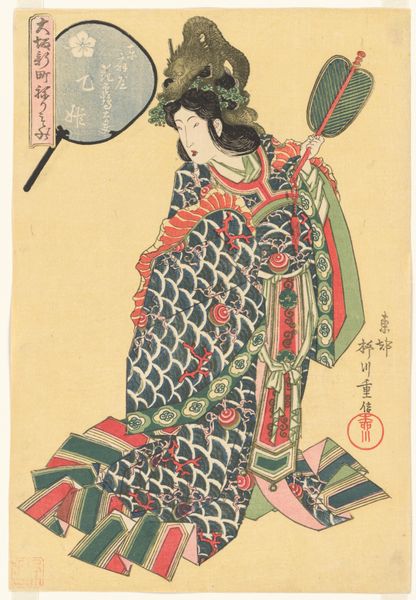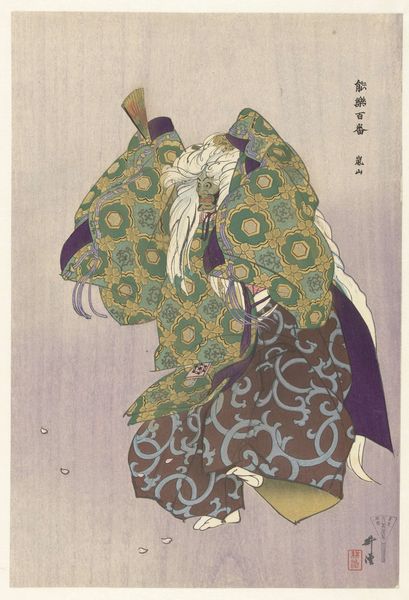
Dimensions: height 378 mm, width 255 mm
Copyright: Rijks Museum: Open Domain
Editor: This woodblock print, titled "Actor in Noh Theater Piece Awaji" by Tsukioka Kogyo, dating from 1926, depicts a figure in elaborate costume. There’s something haunting about the character's masked expression combined with the traditional dress. How do you interpret this work, given its historical context? Curator: This piece resonates deeply within the sociopolitical currents of its time. Tsukioka Kogyo situates this actor, a vessel of tradition, within a rapidly modernizing Japan. Think about the role of Noh theater itself— historically, it was a form of art patronized by the elite, a vehicle for expressing complex moral and philosophical ideas, very often around honour and social order. What does it mean to represent that history at this moment? Editor: So, the print isn't just about the actor; it’s about the social implications of representing traditional culture? Curator: Exactly! Consider the intersection of art, identity, and power here. Who gets to define and preserve cultural heritage? Does preserving it necessarily serve a diverse population? I’d invite the viewer to contemplate who benefits from a romanticized image of the past and how that affects present-day realities for marginalized communities. Does the image, perhaps unconsciously, present an exclusionary, elitist past? Editor: That's a perspective I hadn't considered! It's fascinating to think about how even a seemingly straightforward depiction of traditional art can be laden with so many complex socio-political layers. Curator: Absolutely. It calls for a deeper investigation into representation and agency, questioning the narratives we inherit and actively creating space for more inclusive ones. I find that looking at this work critically lets us reflect on whose stories we uplift and whose remain in the shadows. Editor: I definitely have a lot to think about. Thanks for offering a fresh view on it.
Comments
No comments
Be the first to comment and join the conversation on the ultimate creative platform.

